Abstract
Large numbers of deaf and hard-of-hearing people are in danger of becoming infected with the human immunodeficiency virus (HIV). The deaf are particularly vulnerable because of language barriers, their unique culture, and the paucity of community services, educational programs, and general information directed to this population. The particular barriers that the deaf must face in learning about HIV protection range from inadequate schooling about human sexuality to the scarcity of locally available education programs outside the cities with high rates of HIV infection. The programs for the deaf in Houston, Los Angeles, and New York City are described as well as the array of national efforts directed to this special population.
Full text
PDF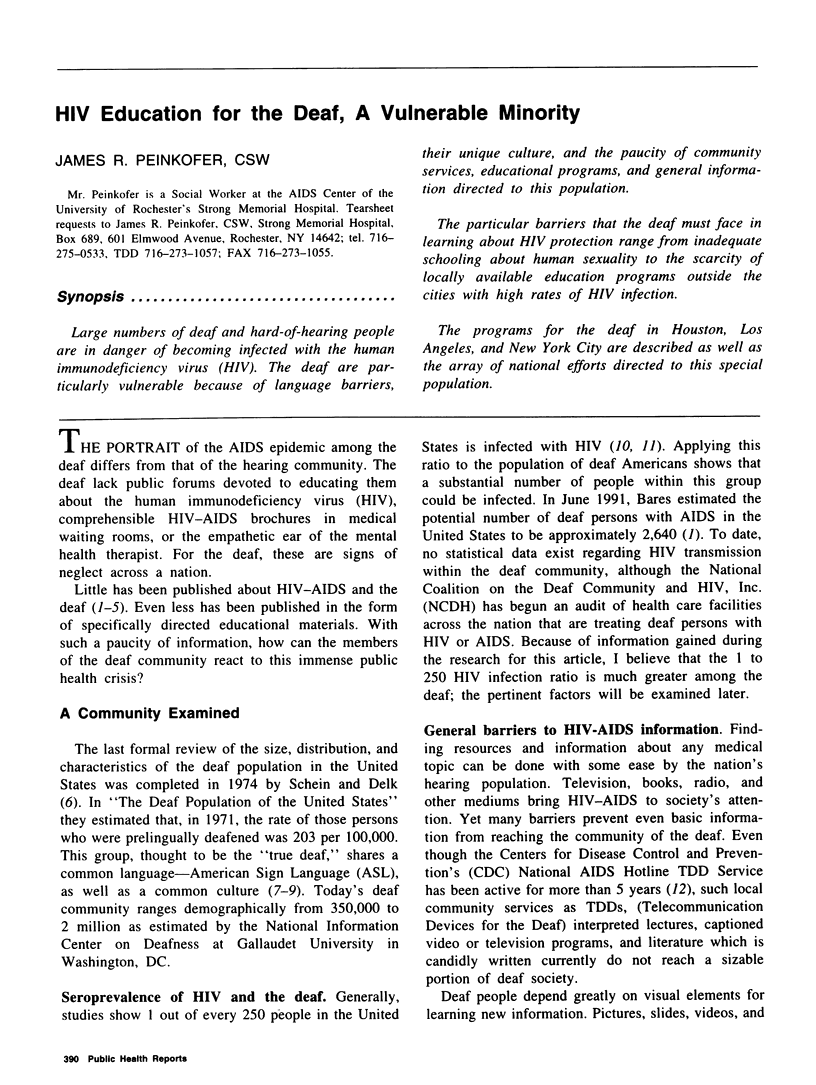
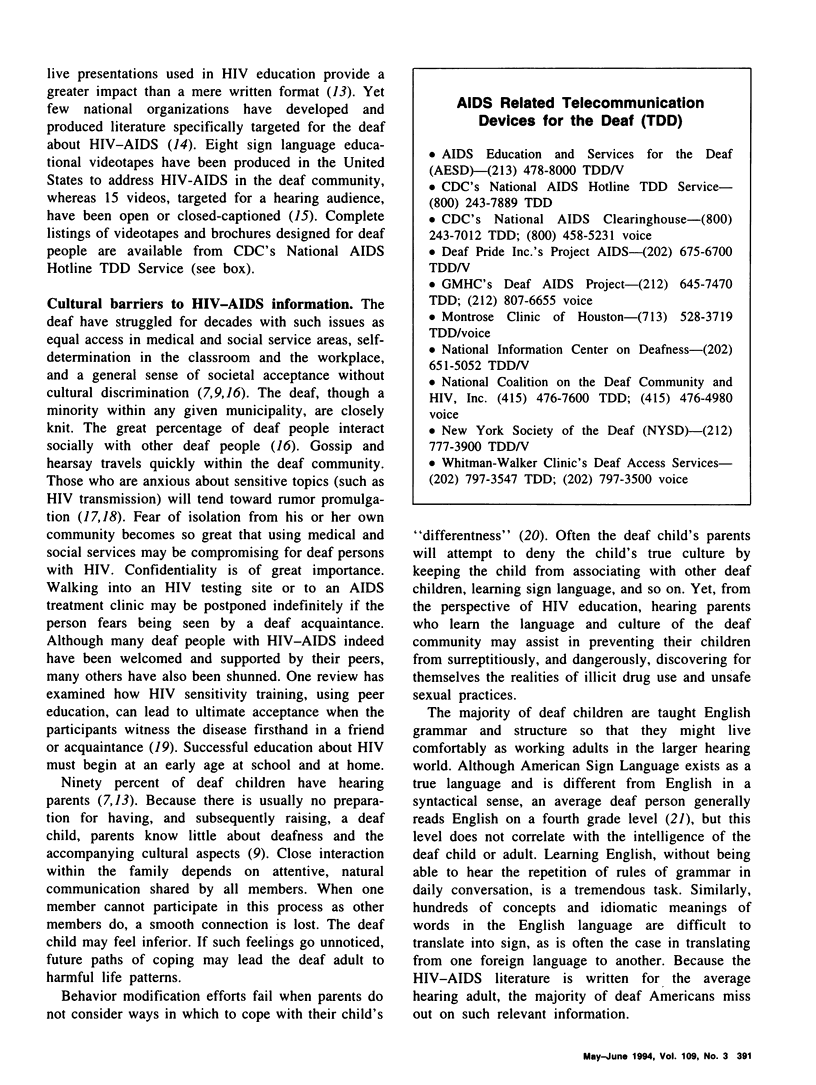

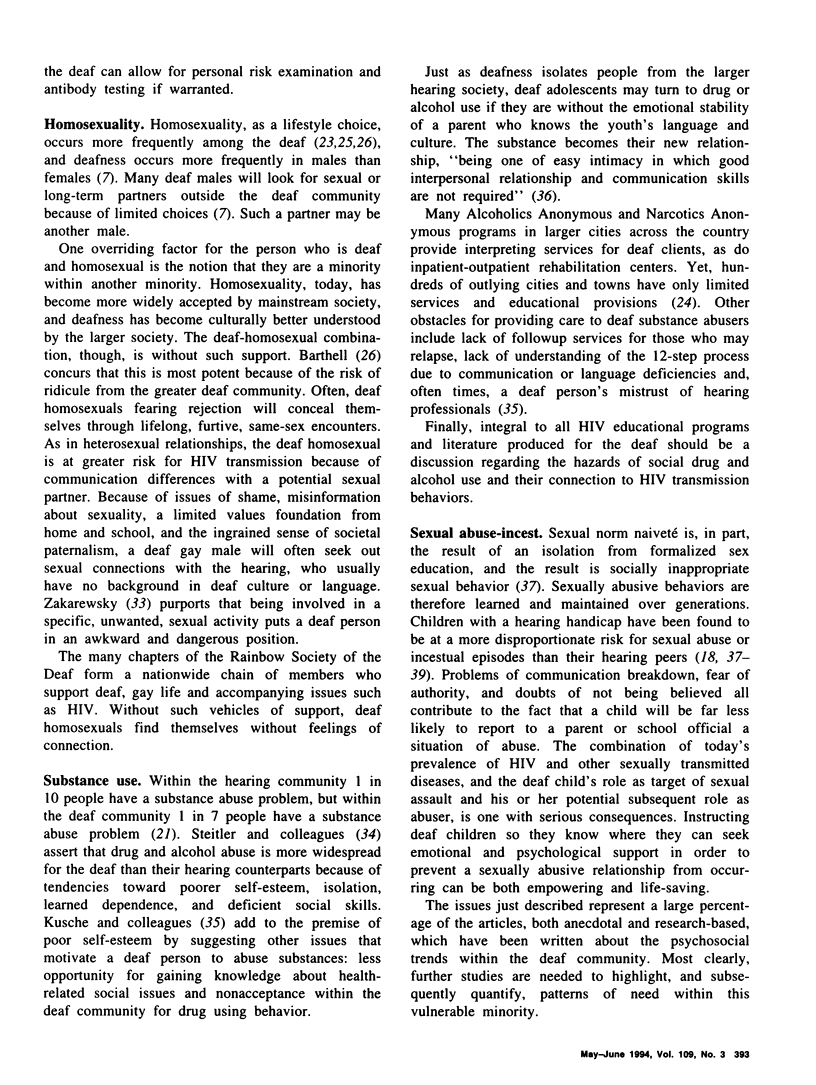
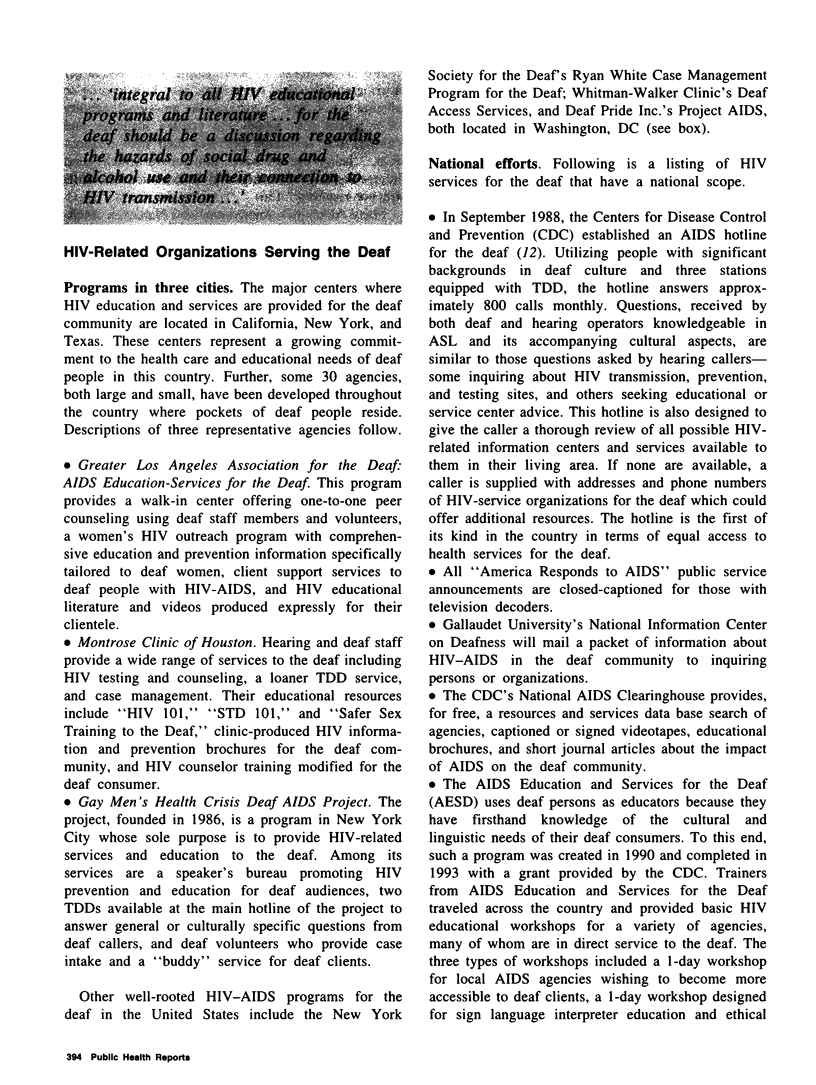
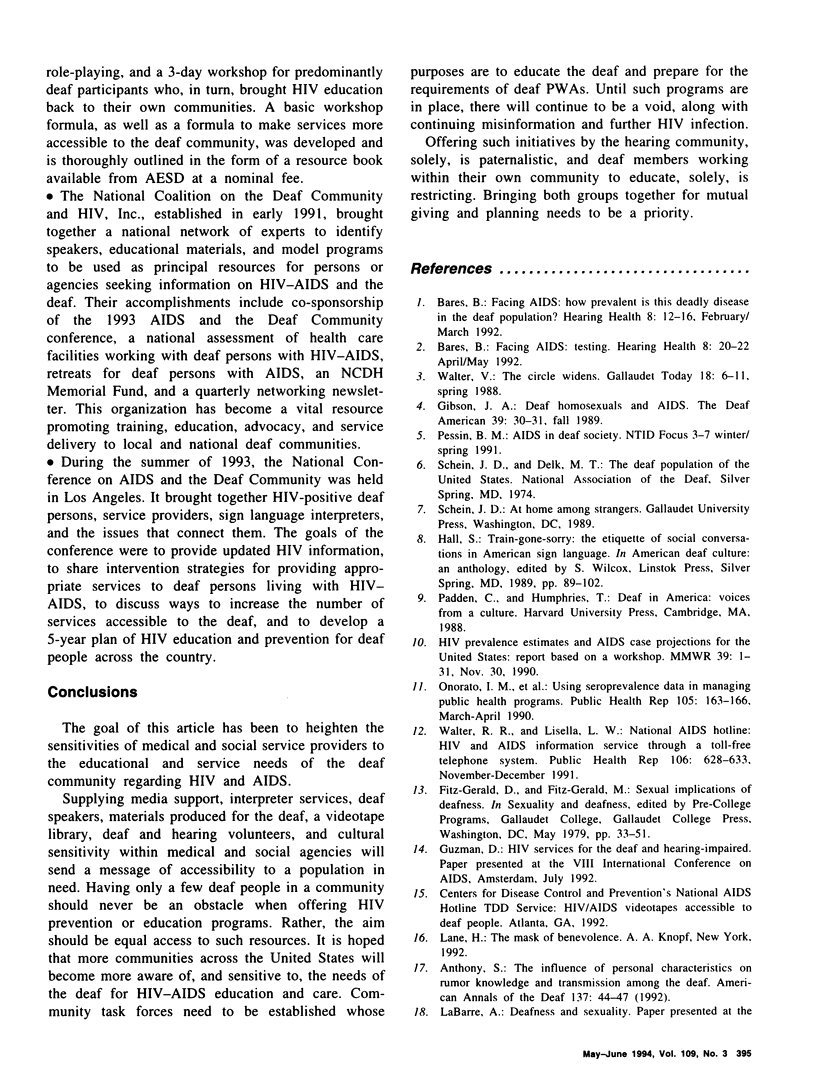
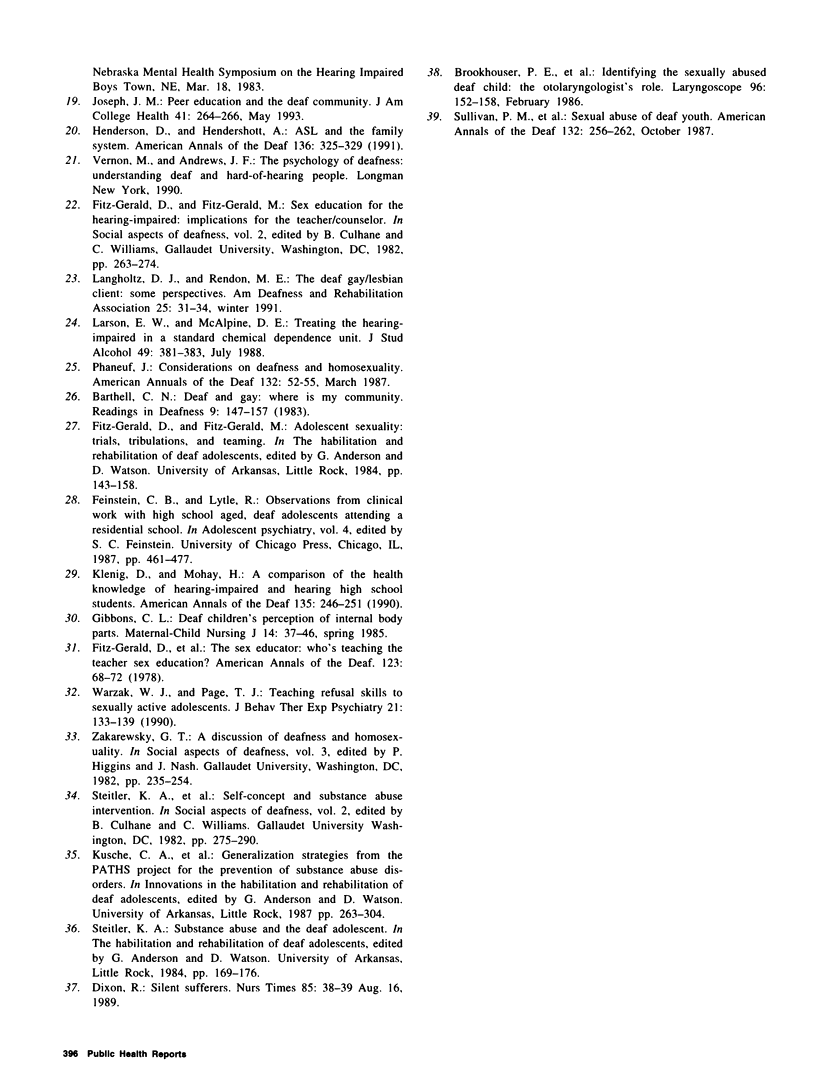
Selected References
These references are in PubMed. This may not be the complete list of references from this article.
- Anthony S. The influence of personal characteristics on rumor knowledge and transmission among the deaf. Am Ann Deaf. 1992 Mar;137(1):44–47. doi: 10.1353/aad.2012.0413. [DOI] [PubMed] [Google Scholar]
- Brookhouser P. E., Sullivan P., Scanlan J. M., Garbarino J. Identifying the sexually abused deaf child: the otolaryngologist's role. Laryngoscope. 1986 Feb;96(2):152–158. doi: 10.1288/00005537-198602000-00005. [DOI] [PubMed] [Google Scholar]
- Dixon R. Silent sufferers. Nurs Times. 1989 Aug 16;85(33):38–39. [PubMed] [Google Scholar]
- Feinstein C. B., Lytle R. Observations from clinical work with high school aged, deaf adolescents attending a residential school. Adolesc Psychiatry. 1987;14:461–477. [PubMed] [Google Scholar]
- Fitz-Gerald D., Fitz-Gerald M., Williams C. M. The sex educator: who's teaching the teacher sex education? Am Ann Deaf. 1978 Feb;123(1):68–72. [PubMed] [Google Scholar]
- Gibbons C. L. Deaf children's perception of internal body parts. Matern Child Nurs J. 1985 Spring;14(1):37–46. [PubMed] [Google Scholar]
- Henderson D., Hendershott A. ASL and the family system. Am Ann Deaf. 1991 Oct;136(4):325–329. doi: 10.1353/aad.2012.0546. [DOI] [PubMed] [Google Scholar]
- Joseph J. M. Peer education and the deaf community. J Am Coll Health. 1993 May;41(6):264–266. doi: 10.1080/07448481.1993.9936339. [DOI] [PubMed] [Google Scholar]
- Kleinig D., Mohay H. A comparison of the health knowledge of hearing-impaired and hearing high school students. Am Ann Deaf. 1990 Jul;135(3):246–251. doi: 10.1353/aad.2012.0521. [DOI] [PubMed] [Google Scholar]
- Larson E. W., McAlpine D. E. Treating the hearing-impaired in a standard chemical dependence unit. J Stud Alcohol. 1988 Jul;49(4):381–383. doi: 10.15288/jsa.1988.49.381. [DOI] [PubMed] [Google Scholar]
- Onorato I. M., Jones T. S., Forrester W. R. Using seroprevalence data in managing public health programs. Public Health Rep. 1990 Mar-Apr;105(2):163–166. [PMC free article] [PubMed] [Google Scholar]
- Phaneuf J. Considerations on deafness and homosexuality. Am Ann Deaf. 1987 Mar;132(1):52–55. doi: 10.1353/aad.2012.0838. [DOI] [PubMed] [Google Scholar]
- Sullivan P. M., Vernon M., Scanlan J. M. Sexual abuse of deaf youth. Am Ann Deaf. 1987 Oct;132(4):256–262. doi: 10.1353/aad.2012.0614. [DOI] [PubMed] [Google Scholar]
- Waller R. R., Lisella L. W. National AIDS Hotline: HIV and AIDS information service through a toll-free telephone system. Public Health Rep. 1991 Nov-Dec;106(6):628–634. [PMC free article] [PubMed] [Google Scholar]
- Warzak W. J., Page T. J. Teaching refusal skills to sexually active adolescents. J Behav Ther Exp Psychiatry. 1990 Jun;21(2):133–139. doi: 10.1016/0005-7916(90)90018-g. [DOI] [PubMed] [Google Scholar]


